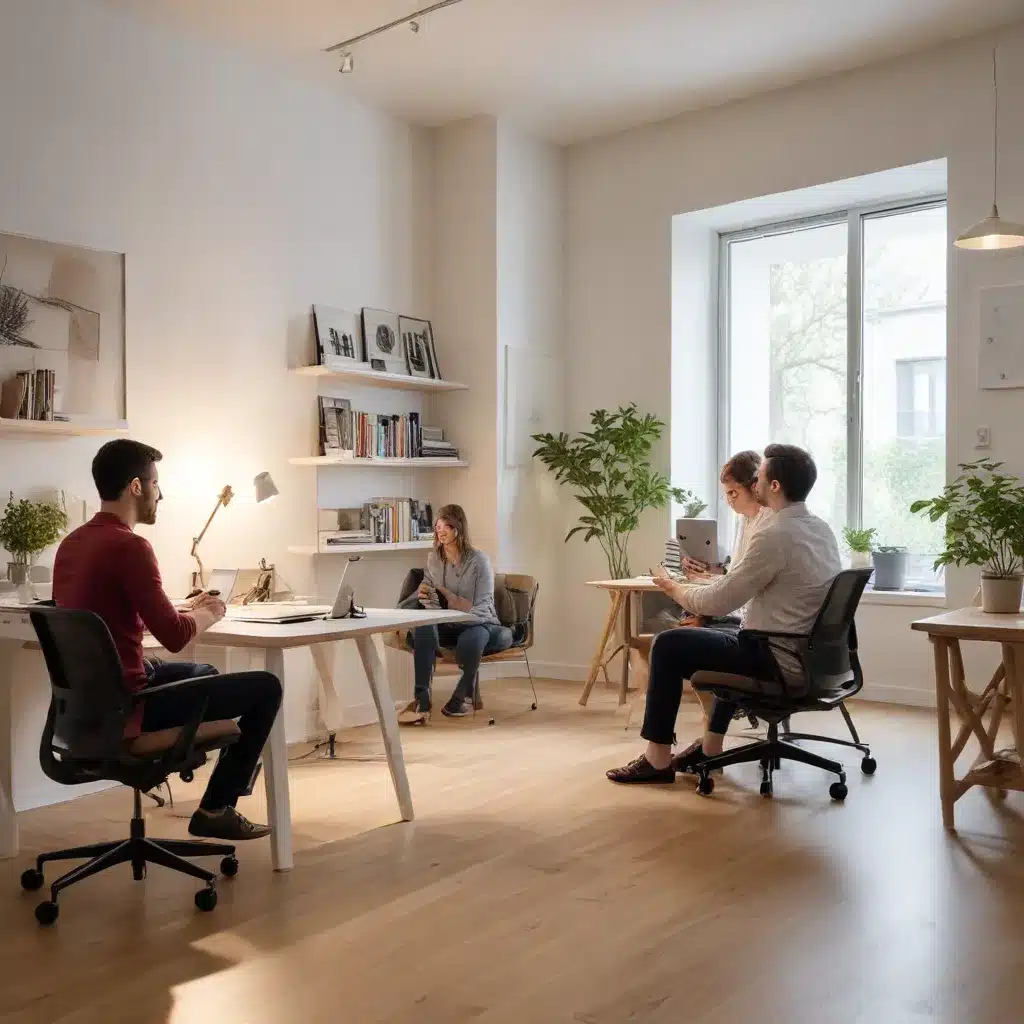
Embracing the Changing Landscape of Home and Work
In today’s rapidly evolving world, flexibility has become a paramount consideration for homeowners and designers alike. As our lifestyles, work routines, and family dynamics continue to shift, the demand for adaptable living spaces has never been more pronounced. Enter the realm of adaptive design – an innovative approach that empowers us to create homes that seamlessly accommodate our evolving needs and preferences.
At the heart of adaptive design lies the recognition that our living environments must be as dynamic as the lives we lead. Whether you’re a young professional working remotely, a growing family with changing spatial requirements, or a retiree seeking to downsize, the principles of adaptive design offer practical and inspiring solutions to transform your home into a sanctuary that evolves alongside you.
Maximizing Functionality through Flexible Spaces
The cornerstone of adaptive design is the ability to create multi-functional spaces that can serve a variety of purposes. By thoughtfully zoning and configuring your living areas, you can cultivate an environment that effortlessly transitions between work, relaxation, and entertainment.
Zoning Strategies: Divide your rooms into distinct zones using movable walls, sliding doors, or strategic furniture placement. This allows you to delineate spaces for specific activities, such as a home office, a children’s play area, or a cozy reading nook, without compromising the overall flow and openness of your home.
Convertible Furniture: Invest in pieces that serve multiple functions, such as a sofa bed, a dining table that expands to accommodate guests, or a murphy bed that transforms a spare room into a guest suite. These versatile furnishings enable you to adapt your space to accommodate unexpected needs or changing circumstances.
Vertical Integration: Maximize the utilization of your vertical space by incorporating shelving, lofted beds, and modular storage solutions. This not only frees up precious floor space but also allows you to seamlessly integrate work, leisure, and organizational elements throughout your home.
Smart Home Technology: Leverage the power of smart home devices to enhance the adaptability of your living spaces. Automated lighting, climate control, and even motorized window treatments can help you effortlessly shift the ambiance and function of a room with the touch of a button.
Designing for Evolving Lifestyles
As our lifestyles and family dynamics evolve, adaptive design provides the flexibility to ensure your home remains a comfortable and practical sanctuary. Consider the following strategies:
Adaptable Family Spaces: Design rooms that can transition as your children grow, transforming a nursery into a study or a playroom into a teen’s hangout. Modular furniture and versatile storage solutions make it easy to reconfigure these areas to suit your family’s changing needs.
Multifunctional Guest Accommodations: Create guest spaces that serve double duty, such as a home office that can easily convert into a comfortable sleeping area for visitors. Incorporate design elements like pullout sofas, murphy beds, and flexible partitions to optimize your available square footage.
Aging-in-Place Considerations: For homeowners looking to age in place, adaptive design offers valuable insights. Features like wide doorways, adjustable countertops, and easy-to-use smart home controls can enhance accessibility and allow you to remain in your home comfortably as your needs evolve over time.
Sustainability and Adaptability: A Harmonious Approach
As environmental consciousness continues to shape consumer preferences, the principles of adaptive design align seamlessly with the pursuit of sustainable living. By creating flexible and multi-purpose spaces, you can minimize the need for extensive renovations or the replacement of entire rooms, thereby reducing waste and conserving resources.
Furthermore, the adaptability inherent in adaptive design allows homeowners to future-proof their living spaces, accommodating changing needs without the burden of costly and energy-intensive overhauls. This not only benefits the environment but also provides long-term financial savings and peace of mind.
The Role of Interior Designers in Adaptive Design
For homeowners seeking to fully harness the potential of adaptive design, collaborating with experienced interior designers in London can be a game-changer. These professionals possess a deep understanding of spatial planning, ergonomics, and the latest design trends, enabling them to craft customized solutions that seamlessly integrate form and function.
By working closely with an interior designer, you can:
- Optimize Layout and Zoning: Receive expert guidance in reconfiguring your floor plan, identifying the most efficient use of space, and strategically positioning multi-purpose areas.
- Select Versatile Furnishings: Discover furniture and fixtures that effortlessly adapt to your evolving needs, from transformative storage solutions to modular seating arrangements.
- Incorporate Smart Home Technology: Integrate cutting-edge smart home features that enhance the adaptability and convenience of your living spaces.
- Maintain Aesthetic Cohesion: Ensure that your adaptive design solutions align with your personal style and aesthetic preferences, creating a harmonious and visually appealing living environment.
Embracing the Future of Flexible Living
As we navigate the ever-changing landscape of modern lifestyles, the principles of adaptive design offer a compelling blueprint for creating homes that truly cater to our evolving needs. By embracing flexibility, sustainability, and innovative technologies, we can cultivate living spaces that adapt and thrive alongside us, empowering us to live more fulfilling and comfortable lives.
Whether you’re embark on a full-scale home renovation or seeking to optimize your existing living space, the insights and strategies of adaptive design provide a valuable roadmap to transform your house into a dynamic, future-proof haven. By partnering with experienced professionals and staying attuned to the latest design trends, you can unlock the true potential of your living environment and create a home that adapts seamlessly to your ever-changing lifestyle.
To learn more about how you can incorporate adaptive design principles into your home renovation in London, connect with our team of expert builders and interior designers today. Together, we’ll help you craft a living space that not only meets your current needs but also anticipates and accommodates your evolving requirements, ensuring your home remains a sanctuary of comfort, flexibility, and sustainable living.


